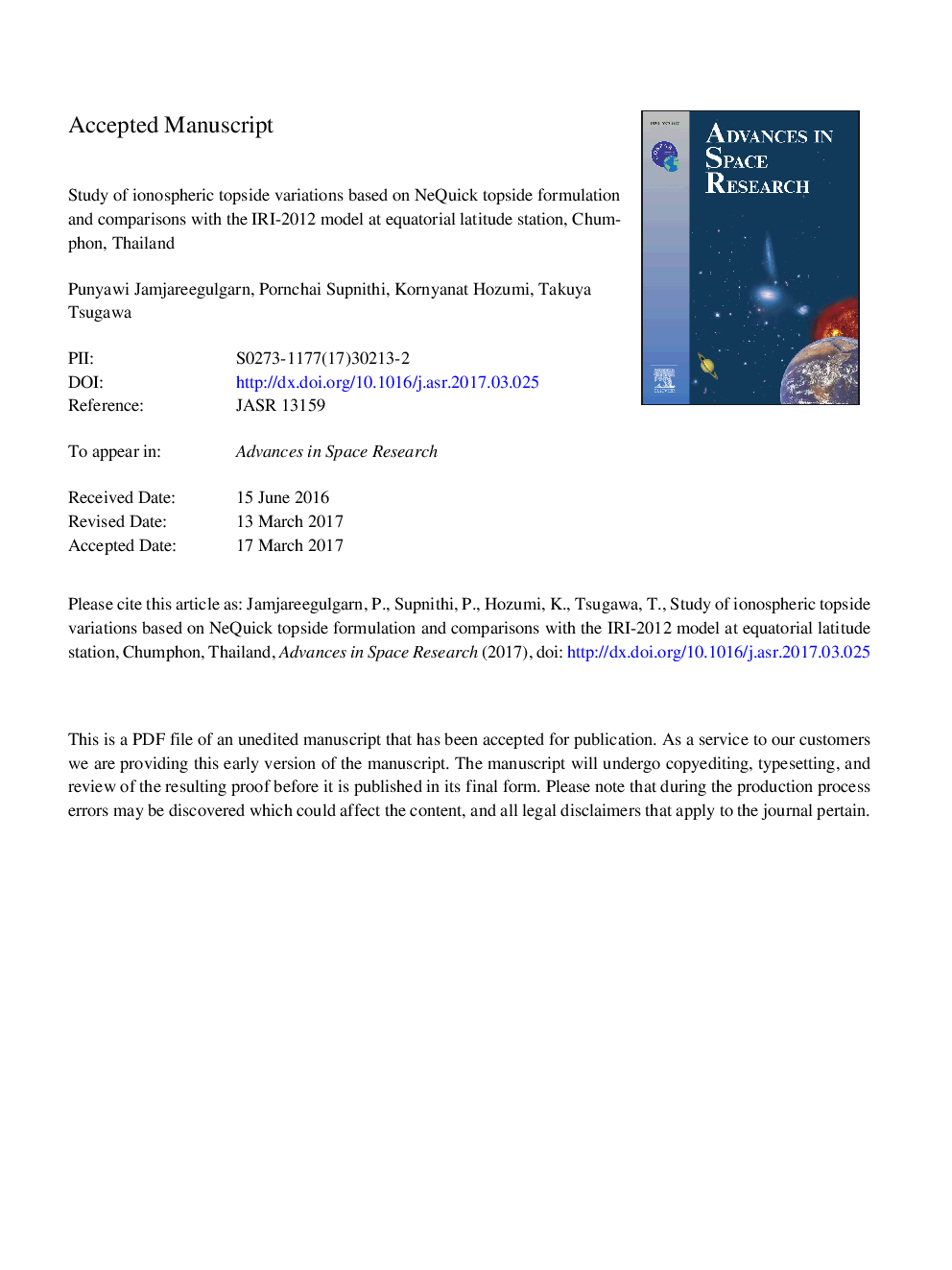| Article ID | Journal | Published Year | Pages | File Type |
|---|---|---|---|---|
| 5486154 | Advances in Space Research | 2017 | 29 Pages |
Abstract
It is well-known that the equatorial anomaly at equatorial and low latitudes is caused by the fountain effect, therefore, the modeling of topside electron density profiles (EDPs) and the knowledge of electron density distribution in the region are particular challenging. Chumphon station, Thailand, is located within this region. However, at this station, since only an FMCW ionosonde system is installed, the topside EDP cannot be automatically obtained. Therefore, in this work, the topside EDPs are derived using the NeQuick topside formulation of the NeQuick 2 model (namely, NeQuick-derived topside EDPs) and then compared with those of three options of the IRI-2012 model including NeQuick, IRI01-corr, and IRI2001 options. The results show that, at Chumphon station, the NeQuick-derived topside EDPs are generally closer to the topside EDPs of IRI01-corr option in winter season and the topside EDPs of NeQuick option in equinox and summer seasons. When analyzing the topside TEC values obtained from each profile and the IGS TEC, it is found that the topside TEC values integrated from NeQuick-derived topside EDPs and predicted by both IRI01-corr and IRI-2001 options of the IRI-2012 model are sometimes higher than the IGS TEC values observed at Chumphon. In addition, we study the diurnal variations of the scale height computed from NeQuick topside formulation (Hsc), hmF2 and foF2 parameters. The correlation of Hsc with the parameters hmF2 and the bottomside thickness parameter of NeQuick model (B2bot). The computed Hsc values during daytime are lower than those during nighttime and they show non-linear correlations with hmF2 and B2bot. The main cause of these discrepancies are possibly due to the B2bot expressions used to compute the Hsc.
Keywords
Related Topics
Physical Sciences and Engineering
Earth and Planetary Sciences
Space and Planetary Science
Authors
Punyawi Jamjareegulgarn, Pornchai Supnithi, Kornyanat Hozumi, Takuya Tsugawa,
